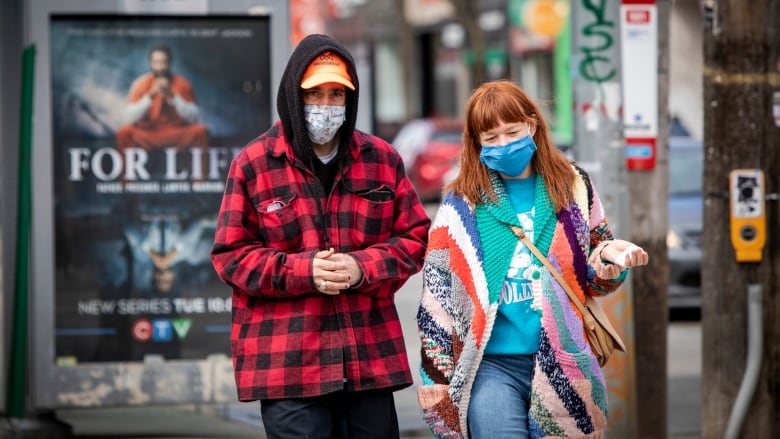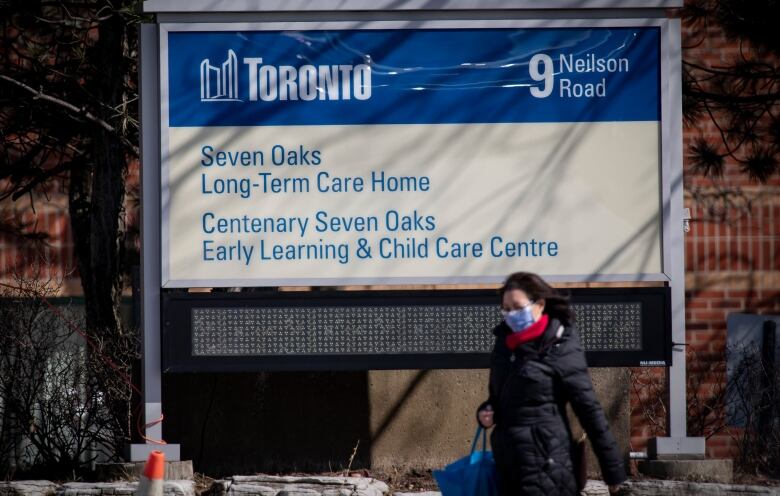Ontario shifts COVID-19 testing focus as cases top 6,000
Province's confirmed cases of COVID-19 total 6,237, CBC News tallies 274 deaths

Ontario plans to shift its focus from testing patients at assessment centres to targeting those who are most vulnerable to COVID-19, including residents of long-term care homes and health-care workers.
Provincial officials say that as the capacity for testing increases from the current 4,000 per day to a goal of 16,000 by early May, more of the tests will go toward groups at a greater risk.
They say that by May 6 only a quarter of the 16,000 people they hope to be testing will have been referred to assessment centres.
The rest will go to symptomatic members of at-risk populations, including:
- Health-care workers.
- First responders like police and paramedics.
- Indigenous andremote and rural communities.
- Peoplein homeless shelters or prisons.
"This step taken by the province and every effort made by each of us to avoid close contact with others are the key to stop the spread of this virus," said Health Minister Christine Elliott.
"We owe it to our front-line and essential workers, to our family friends and workers, to restrict our travel and to act responsibly."
But officials say that testing everyone including the asymptomatic is of little use, because it could result in false negatives.
The province is also updating the list of symptoms that could qualify someone for a test. The expanded list now includes:
- A hoarse voice.
- Difficulty swallowing.
- Loss of sense of smell or taste.
- Diarrhea or nausea and vomiting.
In the case of seniors, additional symptoms include:
- Chills.
- Delirium with no other obvious reason.
- Falls.
- Acute functional decline.
- Increased heart rate.
- Decreased blood pressure.
These updated symptoms are in addition to difficulty breathing, fever, cough, muscle aches, fatigue, headache, sore throat and runny nose.
WATCH: Health Minister Christine Elliott explains possible symptoms of a COVID-19 case
Cases top 6,000
Ontario reported 478 newly confirmed cases of COVID-19 on Friday, an 8.3 per cent increase that bringsthe provincial total to 6,237.
The province's official death toll now sits at 222, though CBC News has compiled data from local public health units and counted at least 274COVID-19-linked deaths.
Another 1,598 people are awaiting test results, while 2,574 cases or slightly more than 41 per cent of total cases are considered resolved.
The province says 73 long-term care homes are experiencing outbreaks, accounting for 931 cases. Further, nearly 700 of the total cases are health-care workers.
It says 17 hospitals are also experiencing outbreaks, in which 50 patients and 40 staff members have been sickened. Eight patients in those hospitals have died.
The new figures provide a snapshot of the COVID-19 situation in Ontario as of 4 p.m. ET Thursday.
The province completed 5,573 tests since the last update, more than the daily average of about 4,000 in the last week but still far below the 13,000 tests it has capacity to do right now.
Officials previously said that they wanted to be doing at least 5,000 tests per day by the end of March, and up to 19,000 per day by the third week of April.
Ontario Premier Doug Ford said earlier this week he wants to see Ontario's daily testing numbers increase significantly in coming days.
Meanwhile, of the 673 total COVID-19 cases that have been hospitalized in Ontario:
- 260 are in intensive care units, a decrease of four since the last provincial update and significantly lower than the 800 at this point in time predicted in provincial modelsreleased earlier this month.
- 217 are on ventilators, three more than in the last update.

Emergency order for child-care providers
The Ontario government has moved to stop child-care centres from collecting payments from parents while the facilities are closed during the COVID-19 pandemic.
An emergency order issued Friday prevents child-care operators from charging parents fees while care is not being provided.
"The order also means that parents cannot lose their child-care space because they are not paying fees during this period," the province said in a news release.
"COVID-19 has imposed significant financial pressure on working parents," said Stephen Lecce, Ontario's education minister.
"We need to support our parents who may be facing reduced income or layoffs during the COVID-19 outbreak."
Ford's Easter message
Ford issued an Easter weekendstatement early this morning, reminding members of the public to stay home despite the holiday weekend.
"We strongly urge everyone to stay home and stay connected with loved ones by phone, email or virtual get-togethers," Ford said.
He went on to thank those working through the weekend on the front line of the COVID-19 pandemic.
"My thoughts today are especially with our front-line health-care workers, first responders, correctional officers, and essential workers," Ford said.
"Thank you for everything you do, and in many cases, special thanks to those who are working through the weekend to keep everyone safe and healthy."
Jail guards push for more protection
Guards at several jails in Ontario have staged work refusals for not being allowed to wear protective gear as cases of COVID-19 creep into the institutions.
The union representing provincial correctional workers says some institutions allow guards to wear protective equipment such as masks and gloves while others do not.
Ontario Public Service Employees Union spokesman Chris Jackel says the issue came to a head when an inmate in Monteith Correctional Complex near Timmins began showing symptoms of COVID-19 last week.
He says guards there refused to work on several occasions because they were not allowed to wear masks and gloves.
Jackel says they were allowed to wear the gear after the inmate tested positive for the disease over the weekend.
The Ministry of the Solicitor General says the inmate was isolated and tested and has taken measures to protect correctional workers.
A ministry spokesperson said jails across the province have access to protective equipment, adding that the health of its workers and inmates is a "top priority."
"The ministry is currently working with bargaining partners to address outstanding matters, such as the use of personal masks," said Kristy Denette.
As of April 6, three inmates had tested positive for COVID-19, the one in Monteith and three at the Toronto South Detention Centre. One staff member at Toronto South and another at Hamilton-Wentworth also tested positive for the disease, she said.
With files from The Canadian Press













_(720p).jpg)


 OFFICIAL HD MUSIC VIDEO.jpg)
.jpg)



























































































